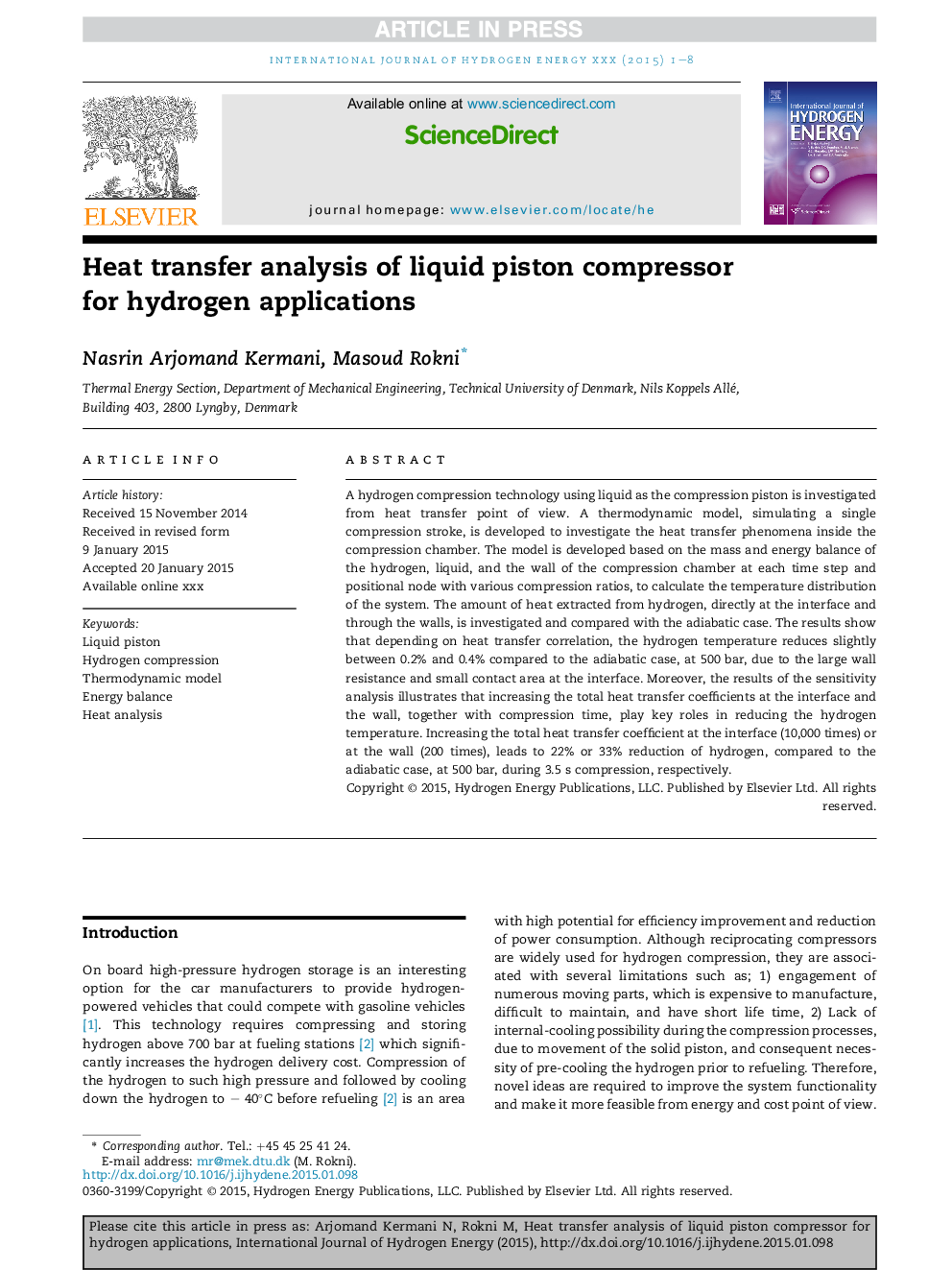| Article ID | Journal | Published Year | Pages | File Type |
|---|---|---|---|---|
| 7714100 | International Journal of Hydrogen Energy | 2015 | 8 Pages |
Abstract
A hydrogen compression technology using liquid as the compression piston is investigated from heat transfer point of view. A thermodynamic model, simulating a single compression stroke, is developed to investigate the heat transfer phenomena inside the compression chamber. The model is developed based on the mass and energy balance of the hydrogen, liquid, and the wall of the compression chamber at each time step and positional node with various compression ratios, to calculate the temperature distribution of the system. The amount of heat extracted from hydrogen, directly at the interface and through the walls, is investigated and compared with the adiabatic case. The results show that depending on heat transfer correlation, the hydrogen temperature reduces slightly between 0.2% and 0.4% compared to the adiabatic case, at 500Â bar, due to the large wall resistance and small contact area at the interface. Moreover, the results of the sensitivity analysis illustrates that increasing the total heat transfer coefficients at the interface and the wall, together with compression time, play key roles in reducing the hydrogen temperature. Increasing the total heat transfer coefficient at the interface (10,000 times) or at the wall (200 times), leads to 22% or 33% reduction of hydrogen, compared to the adiabatic case, at 500Â bar, during 3.5Â s compression, respectively.
Related Topics
Physical Sciences and Engineering
Chemistry
Electrochemistry
Authors
Nasrin Arjomand Kermani, Masoud Rokni,
